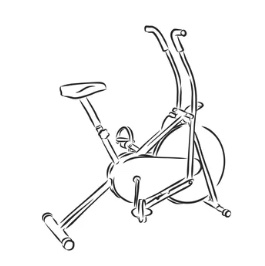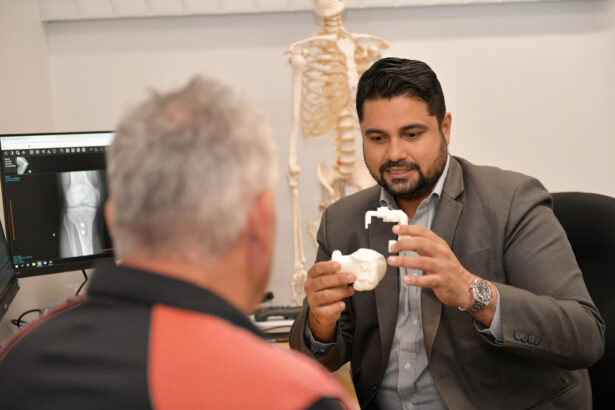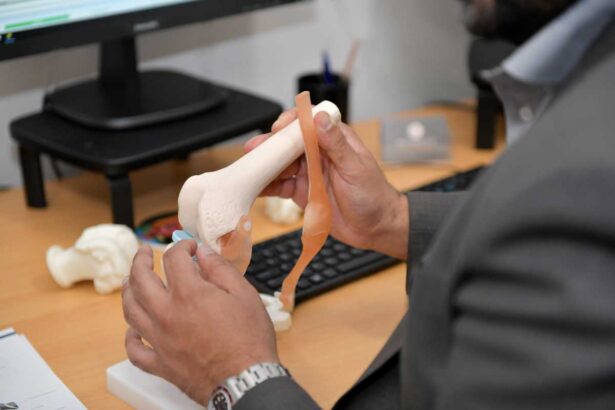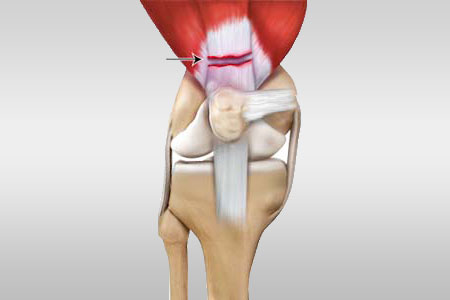
A knee arthroscopy is a minimally invasive surgical procedure that Dr Singh can use to diagnose and treat issues within your knee joint. A tiny camera called an arthroscope is inserted into your knee through a small incision, allowing him to see inside and treat any problems.
Knee arthroscopy is generally a safe procedure with low risks of complications. You’ll likely be able to go home on the same day or after a short hospital stay. Compared to traditional open surgery, recovery is usually faster and you can return to normal activities within a few weeks. However, this can vary depending on the extent of the damage and the specific procedures performed during the surgery.
Physiotherapy is often recommended post-surgery. This will help you regain range of motion, strength, and flexibility in your knee.
Dr Singh performs knee arthroscopy when evaluating and treating the following conditions:
- Torn floating cartilage (meniscus): The cartilage is trimmed to a stable rim, or occasionally repaired
- Torn surface (articular) cartilage
- Removal of loose bodies in the knee (cartilage or bone that has broken off) and cysts
- Reconstruction of the Anterior Cruciate ligaments
- Patello-femoral (kneecap) disorders
- To washout infected knees
- For general diagnostic purposes
The Surgical Procedure
One week before your arthroscopy procedure, you will need to stop taking any anti-inflammatory medications, including aspirin as these drugs may interfere with blood clotting. If however, you are taking aspirin or Warfarin for anti-clotting purposes, associated with previous blood clots or heart disease, you may need to continue with this medication and so this should be discussed with Dr Singh beforehand.
Also, remember to bring your X-rays and any other tests, such as MRI scans to the hospital with you and please ensure that you have no cuts or scratches on your skin, as this is an infection risk.
On the day of your procedure, will meet the anaesthetist who will discuss your medical and anaesthetic history. Dr Singh will also see you prior to surgery and you will be asked by the hospital staff “which side” surgery is happening on. Don’t be alarmed, it is not that we don’t know which side, it is a systems process to ensure outcome precision.
After anaesthesia has commenced, Dr Singh will first examine your leg to assess ligamentous stability. He will then insert the arthroscope and instruments by two small incisions approximately one centimetre long at the front of your knee and the joint is distended with fluid to allow a clear view. The surgery is performed through the small incisions with the images on a television monitor. Local anaesthetic is injected into the joint to reduce your pain after surgery which usually wears off after 12 hours and when you may start to notice an increase in pain at this time.
Following surgery, a three-layer dressing of gauze, padding and tubigrip bandage is applied which remains in place for approximately 2 days. You should keep this dressing dry.
You will see Dr Singh in the recovery area or ward after surgery and he will give you a brief report of the operation with an instruction sheet and a referral for your physiotherapist. If you do not have a regular physiotherapist, Dr Singh can recommend one to you. It is helpful if a support person is with you after the procedure as you may not retain all that you are told because of the lingering effects of anaesthetic agents.
Post-Surgery Guidelines
PAIN RELIEF
Local anaesthetic has been injected into your knee. When this wears off, your knee may become more painful. It may also swell. Therefore, the day after surgery may be more uncomfortable than the day of surgery. It is better to use pain killers when the pain is starting, rather to wait until it has already built up.
As a general principle, it is best to start with regular paracetamol (2 tablets, every 6 hours). If this is not enough you will have been prescribed something stronger, such as Endone, Tramadol or
Panadeine forte. Endone and Tramadol can be taken in addition to paracetamol. Panadeine forte is used instead of paracetamol.
You may also have been prescribed anti-inflammatory tablets to help with pain relief in the first few days after surgery. These should be taken with food. If you get indigestion or have ongoing nausea, the anti-inflammatory tablets should be stopped.
An increase in pain and swelling at about four- or five-days following surgery is not uncommon. Rest, ice, compression, and elevation will also help reduce your symptoms (see below).
DRESSINGS
The small puncture wounds are held together by small tapes (Steristrips). They are covered by waterproof plastic patches, so you can shower directly onto the knee. The dressings can be completely removed after 4 or 5 days. The cuts can be left open if healed and dry, or covered with a Bandaid if still moist.
SWELLING
Swelling is common after an arthroscopy. Fluid in the joint results in generalised swelling and is most obvious above the patella (kneecap). Swelling is also common around the incisions, and this can take some months to resolve.
Swelling will be helped by applying the R.I.C.E. principles – rest, ice, compression, elevation.
REST: During the first 3 days you should rest with your leg elevated as much as possible. You can then gradually increase your activity, guided by your pain and swelling.
ICE: For the first week you should try to ice your knee 3 times a day for 20 minutes. After this time ice the knee following exercise and at the end of the day until your swelling reduces (usually about 2-4 weeks).
COMPRESSION: You will usually have a Tubigrip stocking around you knee. Sometimes you will have a bandage. The bandage can be replaced by a compression stocking on the day after surgery. The compression stocking should be worn during the day until your swelling reduces (usually about 2-4 weeks).
ELEVATION: keep your leg elevated when you are sitting
CRUTCHES
Unless Dr Singh has otherwise instructed, you can place as much weight on the leg as comfortable with the help of crutches for the first 2 to 3 days following surgery.
To start with, the pattern of walking is “crutches, bad leg, good leg”.
Once you are more comfortable, the crutches and operated leg go forward together. You may find it easier just to use one crutch. Use it with the opposite arm i.e. for a left knee operation, use the crutch with your right arm.
To manage steps with crutches, use the following guide:
• UP: good leg, bad leg, crutches.
• DOWN: crutches, bad leg, good leg.
EXERCISES
Begin this exercise program the day after your operation and continue it for the first two weeks.
Knee Locking using the Quadriceps
With a rolled towel under your heel, tighten the quadriceps muscle at the front of your thigh and push your knee into the bed. Hold for 5 seconds and relax. Repeat 10 to 20 times, 2-3 times a day.

Straight leg raises
Lying flat, lock your knee straight and then lift the whole leg about 30cms off the bed. Hold for 3 seconds and relax. Repeat 10 to 20 times, 2-3 times a day.

Knee bending
Slide your heel up towards your bottom as far as comfortable, hold 3 seconds. Repeat 10 times, 2-3 times a day. Gradually regain your full movement.

Knee bending on your stomach (prone)
Begin this exercise about 3 days after your operation. Lie on your stomach and bend your knee as far as comfortable. Hold for 3 seconds and relax. Repeat 10 times, 2-3 times a day.

Stationary cycling
After 10-14 days you should be able to start riding an exercise bike. You may find it more comfortable to raise the seat. Start out with no resistance and for 5-10 minutes on the first day. Gradually increase the resistance and the time as pain and swelling allow.

POST OPERATIVE REVIEW
You will usually have a review appointment with Dr Singh or our nurse, Joy within the first 2-3 weeks of surgery. They will discuss further progression of activities at that time, however the following list provides an approximate guide:
- Driving 3-7 days
- Exercise bike 1-2 weeks
- Swimming 2-4 weeks
- Gym 2-4 weeks
- Exercise walking 2-6 weeks
- Golf 3-8 weeks
- Running 4-8 weeks
- Sport 6-8 weeks
TIME OFF WORK Sedentary 3-5 days | Manual 2-4 weeks
These times are guidelines only and may vary depending on your surgery.
Surgical Risks
Arthroscopic knee surgery is commonly performed by Dr Singh and usually, without any significant complications. All surgery however carries risks including infection, blood clots, problems related to the anaesthetic and inadvertent injury to blood vessels or nerves.
INFECTION
Infection is exceedingly rare following arthroscopic knee surgery. When it occurs, it is manifested by increasing pain, swelling, fever or redness around the incision.
BLOOD CLOTS
Blood clots (deep venous thrombosis) may present as calf pain or unexplained swelling and should be reported to Dr Singh immediately.
 Christmas Operating Hours
Christmas Operating Hours 






















